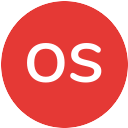5 Alternatives to Databricks for Data Science and Big Data Solutions
By Gregor K. published about 2023-01-14 10:50:15
If you're looking for an alternative to the popular data analysis and engineering platform, Databricks, then you're in luck. In this article, we'll provide a list of similar websites to Databricks that can help you manage, analyze, and store data. From software that offers a wide range of data analysis and engineering features to platforms that specialize in a specific area of data engineering, there's sure to be something here that meets your needs. So, if you're ready to explore your options, let's jump right in.
Databricks
Databricks is a cloud-based platform that enables data teams to unify their data analysis, data engineering, machine learning, and data science efforts. It provides a unified platform for data scientists, engineers, and analysts to collaborate and scale data projects quickly and securely.
Features
- Unified Platform: Unify data analysis, engineering, and science efforts
- Cloud-based: Enables data teams to securely and quickly scale data projects
- Collaboration Tools: Includes collaboration tools to make data projects easier to manage
- Machine Learning: Includes machine learning tools to help with data analysis
Table of Contents
- 1Introduction
- 2Databricks Alternatives
-
3Head-to-Head Comparisons
- 3.1Databricks vs Workspace
- 3.2Databricks vs Amazon
- 3.3Databricks vs DataRobot
- 3.4Databricks vs Google BigQuery
- 3.5Databricks vs Colab
- 3.6Databricks vs Domino
- 3.7Databricks vs Data Warehousing
- 3.8Databricks vs Show
- 3.9Databricks vs Display
- 3.10Databricks vs Elastic
- 3.11Databricks vs Facebook
- 3.12Databricks vs Google
- 3.13Databricks vs Colab
- 3.14Databricks vs Delta Air Lines
- 3.15Databricks vs Instacart
- 3.16Databricks vs Notebook
- 3.17Databricks vs Looker
- 3.18Databricks vs MySQL
- 3.19Databricks vs Microsoft
- 3.20Databricks vs Cache
- 4Databricks History
- 5Databricks Status
- 6Comments
- 7Further Links
Databricks Alternatives
Amazon EMR
Both offer cloud-based services for data analysis and data processing
Amazon EMR is focused on big data processing rather than analytics
Google Cloud Dataproc
Both use Apache Spark for data processing and analysis
Google Cloud Dataproc is focused on data processing and analytics, not just data analysis
IBM Watson Studio
Both offer machine learning capabilities and data processing tools
IBM Watson Studio provides more visualizations and data exploration tools than Databricks
Cloudera Data Platform
Both use Apache Spark and Hadoop for data processing and analysis
Cloudera Data Platform provides more advanced data engineering capabilities than Databricks
Microsoft Azure HDInsight
Both offer a cloud-based data platform for data analysis and data processing
Microsoft Azure HDInsight offers more advanced analytics capabilities and more flexibility than Databricks
Snowflake
Both offer cloud-based data platforms to process and analyze data
Snowflake provides more scalability and data warehousing capabilities than Databricks
Qubole
Both offer cloud-based services for data processing and analytics
Qubole provides more automation capabilities and machine learning tools than Databricks
Workspace
Both Databricks and Workspace offer cloud-based platforms for data processing and analysis.
Databricks is a unified analytics platform for data scientists, engineers and business analysts, whereas Workspace is an online collaborative environment for teams to share ideas, documents and tasks.
Amazon
Both Databricks and Amazon offer cloud computing services.
Databricks provides a unified platform for data engineering, machine learning, and analytics, while Amazon offers an array of products and services to build businesses on the web.
DataRobot
Both Databricks and DataRobot provide products to simplify the process of analyzing data.
While Databricks provides a platform for data engineering, analytics, and machine learning, DataRobot focuses on providing automated machine learning solutions.
Google BigQuery
Both Databricks and Google BigQuery provide cloud-based data processing services.
Databricks offers a suite of tools and libraries for data science and machine learning while Google BigQuery focuses on querying large datasets from multiple sources.
Colab
Both Databricks and Colab are cloud-based platforms used for data analysis and machine learning.
Databricks is a commercial platform with paid plans, while Colab is a free service provided by Google.
Domino
Both Databricks and Domino are cloud-based data science tools.
Databricks is focused on analytics, while Domino is focused on developing models.
Data Warehousing
Both Databricks and Data Warehousing are tools used to store and process data.
Databricks is a cloud-based data platform that includes analytics, machine learning, and data science capabilities, while Data Warehousing is a traditional relational database for organizing and storing data.
Databricks Head-To-Head
Welcome to the head-to-head comparisons of Databricks and other websites. Databricks is a big data processing platform that helps organizations quickly build powerful data pipelines, analyze data in real time, and leverage machine learning for their business. In this comparison we will look at how Databricks compares to other websites in terms of features, performance, user experience, and cost. We will also discuss the pros and cons of each website as well as our overall conclusion on which one is best for your needs. So let's get started!
Databricks and Workspace are cloud-based analytics platforms that help businesses gain insights from data. Databricks provides a unified data platform for its customers, allowing them to access and process structured and unstructured data from multiple sources. It also allows users to build machine learning models and use notebooks for exploratory data analysis. Databricks integrates with popular cloud storage services like Amazon S3 and Microsoft Azure Storage. Workspace is a fully integrated cloud analytics platform that enables businesses to gain insights from their data quickly and easily. With Workspace, companies can explore, cleanse, visualize, analyze, report on and share their datasets in the cloud. The platform offers an array of features including drag-and-drop visualizations, advanced analytics tools such as predictive modeling, GeoSpatial Analysis, Time Series Analysis and more. Additionally, Workspace comes with built-in connectors to popular cloud databases such as Amazon Redshift and Google BigQuery.
Databricks and Amazon are two of the leading cloud computing platforms that provide a range of services for data analysis, machine learning, and development. Databricks offers a collaborative workspace for data engineers, data scientists, and business analysts to explore, transform, and analyze datasets. It utilizes an Apache Spark-based platform to enable interactive analytics with lightning-fast querying. Amazonâs cloud computing services are designed to help customers maximize the productivity of their applications while reducing costs. It offers a wide range of services including Amazon EC2 (Elastic Compute Cloud) which provides on-demand computing resources; Amazon S3 (Simple Storage Service) which is used for object storage; and Amazon Elastic MapReduce (EMR) which provides a managed Hadoop framework. Both Databricks and Amazon offer solutions for advanced analytics such as real-time streaming, natural language processing, deep learning, image recognition, and more. However, Databricks supports an array of languages like Python, R and SQL while Amazon only supports Java and C#. Additionally, Databricks provides various features such as integration with popular cloud providers like AWS or Azure, automated ML model tuning capabilities, notebook sharing between teams or departments in an organization using its collaboration feature called Notebooks Workflows.
Databricks and DataRobot are two popular data analysis platforms for businesses of all sizes. Databricks is a cloud-based platform that combines powerful analytics with Apache Spark, the open source big data processing engine. It offers a suite of tools to help data engineers and scientists quickly prepare, analyze and operationalize machine learning models. DataRobot is also a cloud-based platform offering AI and Machine Learning capabilities for businesses. It has an automated model building feature that helps users quickly create multiple models and compare them against each other to identify the best performing one. Both platforms offer features such as data visualization, automated machine learning, scalability, access control and security. However, there are some key differences between the two. Databricks provides a number of ready-to-use solutions based on popular frameworks like TensorFlow and PyTorch while DataRobot focusses more on automation by providing automated model building capabilities which enable users to quickly build high performing models without any coding required. Additionally, Databricks also provides additional features such as collaboration tools, notebook workflows and job scheduling while DataRobot is more focused on automating predictive modeling tasks.
Databricks and Google BigQuery are two cloud-based data warehouses that enable businesses to store and analyze large volumes of data. Both provide powerful tools for querying, visualizing and managing data. Databricks is a managed analytics platform with an interactive workspace that makes data manipulation and analysis easier and faster. It supports standard open source frameworks such as Apache Spark, Delta Lake, MLflow, TensorFlow and PyTorch. It has features for advanced analytics such as machine learning, graph processing, streaming analytics and time series analysis. Databricks also provides collaboration tools for teams including shared notebooks, automated machine learning pipelines and role-based access control. Google BigQuery is a serverless data warehouse solution that allows users to query petabytes of structured data in seconds using standard SQL commands. It provides support for both batch and streaming data ingestion as well as integration with other Google products such as Cloud Storage, Pub/Sub or Data Studio for visualization purposes. BigQuery also offers many features for performance optimization including columnar storage format, partitioning & clustering tables to reduce query cost and scheduling queries to run periodically on large datasets. Moreover, it supports federated queries across multiple clouds or on-premises databases making it easy to manage hybrid environments.
Databricks and Colab are both cloud-based platforms for data analysis, machine learning, and artificial intelligence. Both offer a variety of features to support the development of these areas, but there are some differences between them. Databricks is focused on enterprise customers who need to analyze large datasets and develop distributed applications. It includes an integrated IDE for coding in Python, R, and SQL, as well as a cluster manager for managing distributed resources. Databricks also offers a library of pre-built analytics functions that can be deployed quickly. Colab is more focused on individual users who want to experiment with data science and machine learning projects. It supports code written in Python, R, and other languages, as well as interactive notebooks with rich media capabilities such as charts and graphs. Colab also provides access to Googleâs powerful GPU compute resources, which can speed up training times substantially. In summary, Databricks is better suited for enterprise-level data analysis needs while Colab is better suited for individual users looking to experiment with machine learning projects.
Databricks and Domino are both cloud-based platforms for data science and machine learning. Both provide a platform for data scientists to quickly build, analyze, deploy and manage models. Databricks is a unified analytics platform that combines the best of open-source technologies with enterprise-grade security and scalability. It offers an interactive workspace that simplifies the process of data exploration and model building with pre-built libraries, notebooks and collaboration features. Domino provides a collaborative environment for data science teams to work together on big data projects. It includes a web-based UI, version control system and project tracking tools, as well as access to popular programming languages such as Python, R and Julia. Additionally, Domino allows users to scale their workloads across clusters in the cloud or on premise. Both Databricks and Domino offer easy integrations with popular cloud services like AWS and GCP, as well as enterprise applications like Salesforce and SAP.
Databricks and Data Warehousing are two popular data management solutions that offer a variety of features for businesses. Databricks provides a cloud-based platform that enables users to develop and deploy data-driven applications quickly and easily. It also helps users train machine learning models, collaborate on projects, and scale their data with ease. Data Warehousing is an enterprise-level solution designed to help businesses store, manage, and analyze large volumes of structured data. It provides users with the ability to integrate data from multiple sources, create reports and dashboards, as well as extract insights from their business intelligence operations. Both Databricks and Data Warehousing allow for fast data processing and can be used in conjunction with other tools such as Apache Spark or Hadoop to further extend their capabilities. In terms of scalability, both solutions are capable of growing with your organizationâs needs while offering high levels of security. Ultimately however, the choice between Databricks or Data Warehousing will depend on the specific requirements of your business.
Databricks and Show are both cloud-based data analysis platforms. Databricks is a more full-featured platform that offers a range of services including data storage, predictive analytics, machine learning, and visualization tools. Show is more focused on the visual aspects of data analysis and provides an intuitive drag-and-drop interface for creating interactive reports and dashboards from your data. Databricks has an extensive library of algorithms for machine learning tasks as well as integration capabilities with popular programming languages such as Python, Scala, and R. It also addresses large scale distributed computing needs with its Apache Spark framework. Additionally, it has powerful security features such as role-based access control (RBAC) and encryption at rest. Show's main strength lies in its rich visualizations which allow users to quickly gain insights into their data without writing complex code. It also includes powerful collaboration features that enable teams to easily share results with one another in real time. The platform also includes automation capabilities to help streamline repetitive tasks such as scheduling reports or monitoring databases for changes.
Databricks and Display are both cloud-based big data analytics platforms that enable users to analyze, visualize, and manipulate large volumes of data. Databricks offers Apache Spark-based analytics, machine learning, and ETL capabilities. It also provides notebook-style development environments with support for popular programming languages such as Python and R. In addition, it can be used to create dashboards or share analysis results with other team members. Display is a powerful data visualization platform that allows users to quickly explore and understand complex datasets. It enables interactive visualization of large datasets in real time using charts, maps, tables, and more. It also supports various sources such as databases, spreadsheets, CSV files, SaaS applications like Salesforce and Google BigQuery. Additionally, it comes with numerous features such as automatic charting types selection based on the datasetâs structure, customizable charts and dashboards with drag-and-drop widgets, integrated search capabilities to help users find insights faster.
Databricks and Elastic are both data platform solutions that provide users with powerful tools for data analytics, storage, and visualization. Databricks offers a comprehensive suite of services for the development of data-driven applications, including notebooks, clusters, and jobs. It also provides integrations with leading cloud providers such as AWS and Azure. Elastic provides a distributed search engine for real-time data exploration, as well as an analytics engine that can process large volumes of data quickly. It offers an intuitive interface for visualizing and exploring data in real-time. Both platforms offer support for multiple programming languages, including Python, R, Java, and SQL. Additionally, they both support streaming data ingestion from various sources such as Kafka and S3. Databricks also offers a wide range of machine learning algorithms to aid users in their analysis tasks. Elastic provides a comprehensive API which can be used to customize searches to fit specific needs.
Databricks and Facebook are both comprehensive data-driven platforms that enable users to collect, analyze, and store data. Databricks is a cloud computing platform that enables users to build advanced analytics solutions with its integrated suite of tools. It provides an environment for teams to collaborate on projects, deploy models in the cloud, and explore big data with its interactive notebooks. In addition, it offers support for various popular programming languages including Python, Scala, Java, and SQL. On the other hand, Facebook is a social media platform that provides users with tools to connect and share their experiences with friends and family. It also allows users to access detailed metrics about their posts as well as insights into user engagement trends. Furthermore, it features AI-powered features such as facial recognition and image classification which can be used to improve the user experience. Both platforms provide powerful analytics capabilities but have different areas of focus; Databricks is better suited for complex data analysis while Facebook is geared towards social media interactions.
Databricks and Google are both cloud-based data analysis platforms that offer powerful tools for data scientists, engineers, and developers. Databricks offers a comprehensive platform for building end-to-end big data pipelines, including an integrated notebook environment for writing code in Python, R, and SQL. It also has advanced features such as collaborative workspaces, automated MLflow tracking, interactive visualizations, and a marketplace of ready-to-use notebooks. Googleâs Cloud Platform offers a suite of managed services to help users manage their data and build applications quickly on the cloud. It includes tools such as BigQuery, Cloud Dataflow and Cloud Dataproc. BigQuery allows users to store vast amounts of data in the cloud and query it using SQL; Cloud Dataflow helps with ETL processes; and Cloud Dataproc gives an easy way to create managed Hadoop or Spark clusters. Both services offer powerful features to help users gain insights from their data but differ in terms of the specific tools they provide.
Databricks and Google Colab are both cloud-based platforms for data science and machine learning. Databricks is a more comprehensive platform offering a wide range of tools and features, while Google Colab is a simpler solution that offers basic capabilities. Databricks provides advanced analytics capabilities such as team collaboration, an interactive notebook environment, advanced streaming analytics, automated machine learning, and enterprise-ready security features. It also integrates with popular open source libraries like TensorFlow, PyTorch, and Scikit-Learn. Google Colab is geared towards users who are new to data science or who need to quickly develop models without having to install any software. It has a user-friendly notebook interface with integration with popular libraries like TensorFlow and Keras. However, it does not offer the same level of advanced analytics capabilities as Databricks. Both platforms offer powerful solutions for data science and machine learning tasks, but Databricks provides a more comprehensive suite of tools for advanced analytics needs.
Databricks and Delta Air Lines are both websites that provide users with different services. Databricks is a cloud-based platform that enables data science teams to work on complex analytics projects, while Delta Air Lines provides customers with online booking of flights and other travel services. Databricks allows users to store, process, and analyze large amounts of data via their web-based platform, as well as helping them develop machine learning models and applications. Delta Air Lines offers features such as multi-city trips, vacation packages, special rates for students and military personnel, flight status information, airport maps, advanced search options and more. Both websites have customer service centers where users can get assistance with any inquiries they may have.
Databricks and Instacart are two websites that offer users different services. Databricks is a data platform designed to help organizations store, explore, and analyze data of any size and complexity. It provides a collaborative workspace for data scientists, machine learning engineers, and business analysts to work together on projects. Instacart is an online grocery delivery service that connects customers to local stores and delivers their groceries within an hour or later in the day. Databricks allows users to use its interface to manage multiple analytics projects with ease in one place. It also offers features such as interactive notebooks, automated machine learning, streaming analytics, and more. Instacart, on the other hand, provides convenience to customers by allowing them to order groceries online from local stores with scheduled delivery times. Additionally, it offers personalized recommendations based on past purchases and user ratings for products.
Databricks and Notebook are two popular software solutions for data science. Both provide a comprehensive set of tools to facilitate the development of data-driven applications. Databricks is designed to make big data processing easier and more efficient, while Notebook is tailored to empower users with interactive computing capabilities. Databricks provides an open source platform that allows users to build, deploy, and manage applications in the cloud. It also offers a range of services such as machine learning, analytics, streaming and ETL jobs. It provides an intuitive graphical interface for easy navigation and high-level control over tasks. Additionally, it provides access to a wide range of data sources like Apache Spark, Hadoop clusters and NoSQL databases. On the other hand, Notebook is an open source web application for creating interactive documents with live code, equations, visualizations and narrative text. It also supports various languages like Python and R which makes it suitable for data analysis tasks. Furthermore, it offers advanced features like widgets for user interaction and dashboards for displaying results in real time. Furthermore, it supports collaborative editing so multiple users can work together on documents simultaneously.
Databricks and Looker are both cloud-based platforms that provide data analysis and visualization tools. Databricks provides a platform for building, managing, and sharing data science projects in the cloud. It has features that allow users to create interactive notebooks with SQL, Python, R and Scala as well as create and share dashboards. Looker is a Data Analytics Platform designed to help data teams explore their data and make decisions faster. With Looker users can build custom visualizations, analyze large datasets quickly, and collaborate on insights in real-time. Both platforms offer easy access to data sources such as databases, flat files, APIs, and more. However Looker offers additional features such as the ability to combine disparate datasets into one source to get a holistic view of the customer journey and the ability to easily incorporate machine learning models into analysis workflows.
Databricks and MySQL are both popular data management solutions. Databricks is a cloud-based platform that allows users to easily develop, manage, and deploy applications in the cloud. It offers scalability, flexibility, and high performance for large scale data processing. MySQL is an open source database that allows users to store and retrieve data from their databases. MySQL supports a wide range of programming languages making it easy to develop applications. The main difference between Databricks and MySQL is the type of data management platform they are used for. Databricks is a cloud solution for big data processing while MySQL is primarily used as a relational database. Databricks also offers more features such as distributed computing capabilities, machine learning tools, interactive notebooks, and SQL queries which make it easier for developers to work with large datasets. On the other hand, MySQL does not offer these features but provides features such as high availability, scalability, transaction support, security options and replication which makes it suitable for web development or embedded applications. In terms of deployment options both solutions can be deployed on premise or in the cloud depending on user preferences. Both solutions also provide secure access control mechanisms and can be integrated with other products such as Hadoop or Spark. Lastly, both solutions are available in open source versions as well as paid versions with additional features such as analytics or reporting capabilities.
Databricks and Microsoft are popular cloud-based data analytics platforms that offer powerful tools for collecting, analyzing, and visualizing large amounts of data. Databricks focuses on providing an easy-to-use platform with a variety of features to help users quickly process and analyze their data. It offers an interactive workspace where users can manage their data, build machine learning models, create notebooks, and deploy code from within the platform. Microsoft, on the other hand, provides a comprehensive suite of business intelligence tools including Power BI for creating reports and dashboards. Additionally, it has built in connectors for connecting to a range of data sources as well as scaling capabilities to handle large datasets. Both platforms provide APIs for automating tasks and integrating with third party applications. Finally, both offer reliable security protocols to keep user data safe while also allowing users to collaborate securely with team members.
Databricks and Cache are both cloud-based data analytics platforms designed to help users quickly analyze, visualize, and share insights from their data. Databricks is an open source platform that combines Apache Spark with a workspace for collaboration and integration with popular data sources like S3, Hadoop, and MongoDB. It also allows users to build machine learning models using automated MLflow tracking. Cache is a cloud-based AI-driven platform that helps organizations gain real-time business insights from their data. It offers powerful visualizations, dashboards, predictive analytics, and natural language processing capabilities. Both platforms provide access to large amounts of data from various sources, but the main difference lies in how they use this data. Databricks' focus is on helping users extract useful information from large datasets by leveraging Apache Spark's distributed computing capabilities. Cache's focus is on providing users with real-time insights through AI technologies such as machine learning and natural language processing.
History of Databricks
Databricks was founded in 2013 by the team that created Apache Spark, a powerful open-source data processing engine. The website was created to provide an easy-to-use platform for big data processing and data science. It quickly gained popularity as a powerful cloud-based platform for data analysis, machine learning and data engineering applications. Databricks now offers a variety of services and features to help organizations manage and analyze their data.
Databricks Status
The Databricks website on online and reachable (last checked on 2025-07-02 01:00:19).
Comments
-

Who knew there were so many Databricks alternatives? I'm feeling overwhelmed!
2023-04-12 13:13:47 · -

-

-

-

-

-

-

-

-

Further Links
Trending Sites
Top Sites in Big Data
Top Sites in Machine Learning
Databricks
Databricks is a cloud-based platform that enables data teams to unify their data analysis, data engineering, machine learning, and data science efforts. It provides a unified platform for data scientists, engineers, and analysts to collaborate and scale data projects quickly and securely.
Features
- Unified Platform: Unify data analysis, engineering, and science efforts
- Cloud-based: Enables data teams to securely and quickly scale data projects
- Collaboration Tools: Includes collaboration tools to make data projects easier to manage
- Machine Learning: Includes machine learning tools to help with data analysis
Table of Contents
- 1Introduction
- 2Databricks Alternatives
-
3Head-to-Head Comparisons
- 3.1Databricks vs Workspace
- 3.2Databricks vs Amazon
- 3.3Databricks vs DataRobot
- 3.4Databricks vs Google BigQuery
- 3.5Databricks vs Colab
- 3.6Databricks vs Domino
- 3.7Databricks vs Data Warehousing
- 3.8Databricks vs Show
- 3.9Databricks vs Display
- 3.10Databricks vs Elastic
- 3.11Databricks vs Facebook
- 3.12Databricks vs Google
- 3.13Databricks vs Colab
- 3.14Databricks vs Delta Air Lines
- 3.15Databricks vs Instacart
- 3.16Databricks vs Notebook
- 3.17Databricks vs Looker
- 3.18Databricks vs MySQL
- 3.19Databricks vs Microsoft
- 3.20Databricks vs Cache
- 4Databricks History
- 5Databricks Status
- 6Comments
- 7Further Links
